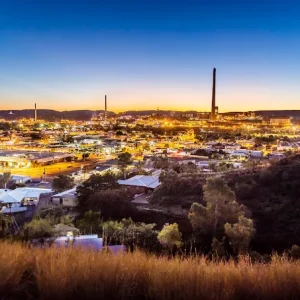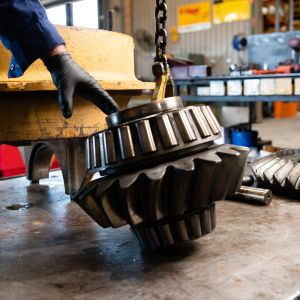Australia does not have enough money to build all the infrastructure we require. This will mean managing expectations as much as putting scarce resources (people and money) to the best use. There are ways this can be done without upsetting the apple cart, with benefits available to everyone if it is done right. Sometimes it means approaching a problem from a different angle. Looking at our roads, see if this fires you up!
Whilst similar issues abound with the infrastructure in all areas, I’ll use an example related to our road networks as it’s something everyone can easily relate to. Driving to or from work there are bottle necks that slow traffic in the same places each day. I believe all levels of Government have traffic engineers or similar that presumably analyse traffic flows as well as subsequently designing much needed but quite costly road upgrades. This still needs to be done, but I wonder how often someone actually gets out of the office and observes how the traffic flows at these bottle necks. Just like me (and all of you) making simple observations whilst stuck in traffic, there are some low cost solutions that won’t totally fix the problems but will provide significantly more benefits than they cost. Some of them literally require a lick of paint!
In no particular order and partially interlinked:
Driver education:
- bunch up when stuck in queues (especially if cars behind you got caught blocking the intersection) and go when it goes green.
- If you want to go slow or are unsure of where you are going, stick to the left lane. Driving school cars seem to be the worst offenders.
Road design:
- Left lane ends should become right lane ends. Like most countries overseas, it should be the more competent/faster drivers in the fast lane having to slow down to merge than try to get slow traffic to speed up. This would help get slow drivers into the habit of driving in the slow left lane.
- Turning lanes are often too short, leading to a build up of traffic that blocks the lanes going straight ahead. This is especially frustrating when the section before the turning lane is a built up median strip.
- Why are perfectly good vehicle lanes being closed off to make way for extra bike lanes instead? Rarely are these lanes used compared to how many people use vehicles. And when a road is upgraded at great cost, why does the speed limit get reduced upon completion by 10 kph compared to the old road that was there?
- More roads seem to have a break down lane bigger than the lanes being used. Many times broken down/crashed vehicles are in any lane anyway, so make these break down lanes part of the normal network, thereby giving an extra lanes capacity 100% of the time rather than having a lane that is used a fraction of 1%. Typical examples are all the main highways around big cities.
Change enforcement focus:
- The USA fines people for driving too slowly on freeways obstructing traffic more than they do the ones going too fast. Should be enforced on those not “Keeping left unless overtaking” also.
- Germany has KPI’s on how quickly roads can be cleared after an accident, with even fatalities cleared within 30 minutes. Accidents cause the sauce bottle effect: first nothing gets through, then next to nothing, then shake it up a bit and everything flows once the blockage is cleared.
- Some main roads have a requirement that trucks must keep to the left lane unless turning. Start enforcing it, as especially at a set of lights trucks move off slowly and by the time they get up to speed a large number of light vehicles could have made it through instead.
- For country driving, fine those who trundle along in the single lane section only to speed up when it gets to an overtaking area.
Use technology:
- During peak traffic times, use the cameras at main intersections and have someone remotely change the traffic light phasing. Things like keeping it green a bit longer to reduce the impact of vehicles speeding up, thereby letting more traffic through. Or noting that the road ahead or a turning lane is obstructing traffic, so direct green lights to where it reduces the bottle necks.
- Victoria has replaced nearly all level crossings at great cost. Having been stuck at any level crossing, especially the ones close to a station, the light is red whilst the train is still nowhere near crossing the intersection. Change this so the lights and booms don’t activate until the train is ready to move through.
- Vehicles driving with navigation aps can often benefit from using the re-routing suggestions.
Road works:
- Only have the reduced speed signs whilst work is being undertaken or the lanes are narrower/actually under repair. Fine the company doing the works when they leave reduced speed signs up, as leaving them up reduces adherence the road work speed limits when they are actually justified.
- Have a reasonable exclusion zone. Sometimes cones are put out a kilometer or more before/after the actual work. Other peeves are closing off extra lanes unnecessarily.
- Consider doing the works in a shorter space of time. Some works cause disruption for months (even years, the M1 to the Gold Coast being a case in point). Either do shorter sections at a time or find ways to jam in more work to complete the works earlier (even running 24/7 and paying overtime to reduce the disruption from setting up/packing up).
My last few editions have related to Productivity. All the above suggestions would improve the productivity of our society by having people stuck in traffic less of the time. That never gets measured nor factored in. Let’s assume every person in Qld (5 million people) spends just 15 mins per day in traffic delays. That’s 1.25 million hours per day wasted, unproductive, or more than 2 working weeks per person (man, woman and child) per year. If we put a value on that time of $30 per hour, that’s costing $37.5 million per day, or over $13.5 billion per year. No wonder transport companies are talking about adding congestion charges, a cost that will be passed on to all goods we require.
Queensland has an infrastructure deficit that in effect is that we have today the infrastructure we needed 30 years ago. Even throwing endless money and people at this problem is unlikely to bridge that gap in our life time. However, there are a lot of things we could and should do to improve the living quality for our population. We should really pause immigration until our infrastructure catches up. Decisions on infrastructure priorities should also be taken out of the hands of politicians and done based on proper cost/benefit comparisons.
I won’t claim to be a genius stuck in a bottle, but surely some lateral thinking and trying some of these suggestions is worth a go?
Words from the wise
Traffic is like life. You are either moving or stuck in a jam. When stuck, turn delays into moments of reflection. Although there tends to be too much reflection and not enough progress.
“Reality is the leading cause of stress amongst those in touch with it” – Jane Wagner
“At the end of the day, you’re responsible for yourself and your actions and that’s all you can control. So rather than be frustrated with what you can’t control, try to fix the things you can.” – Kevin Garnett
As always, Onwards and Upwards!
Fred Carlsson
General Manager




